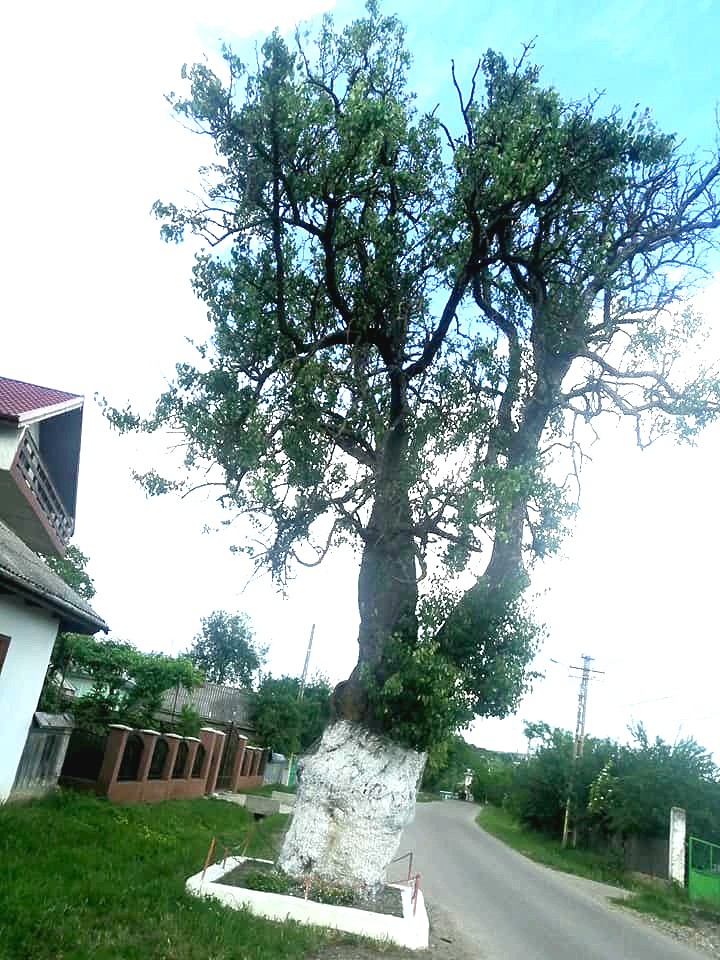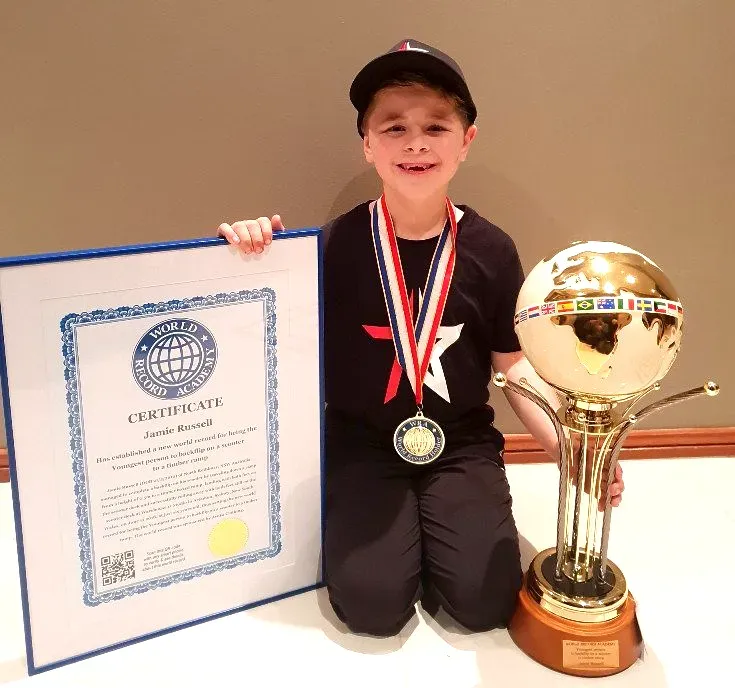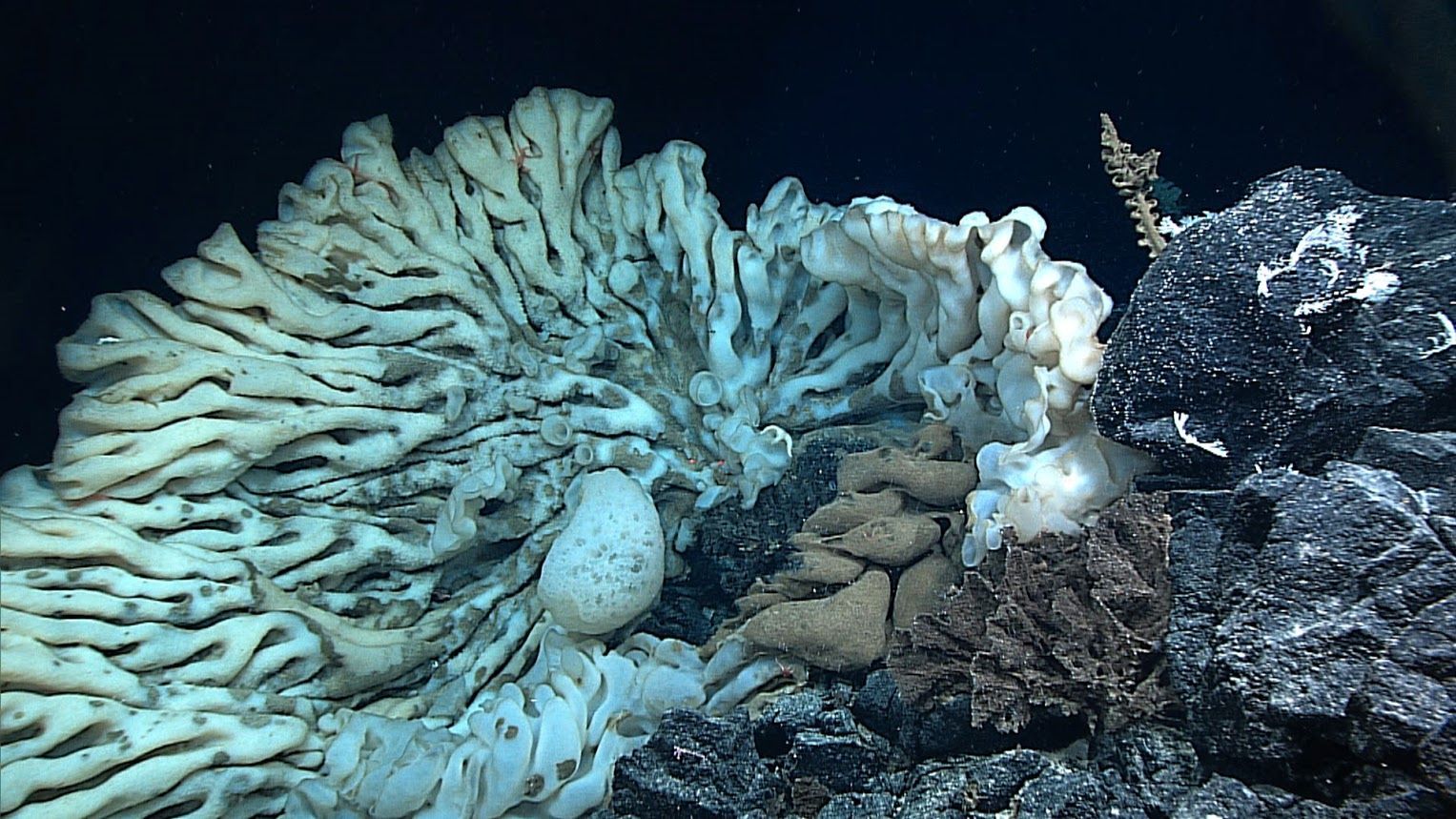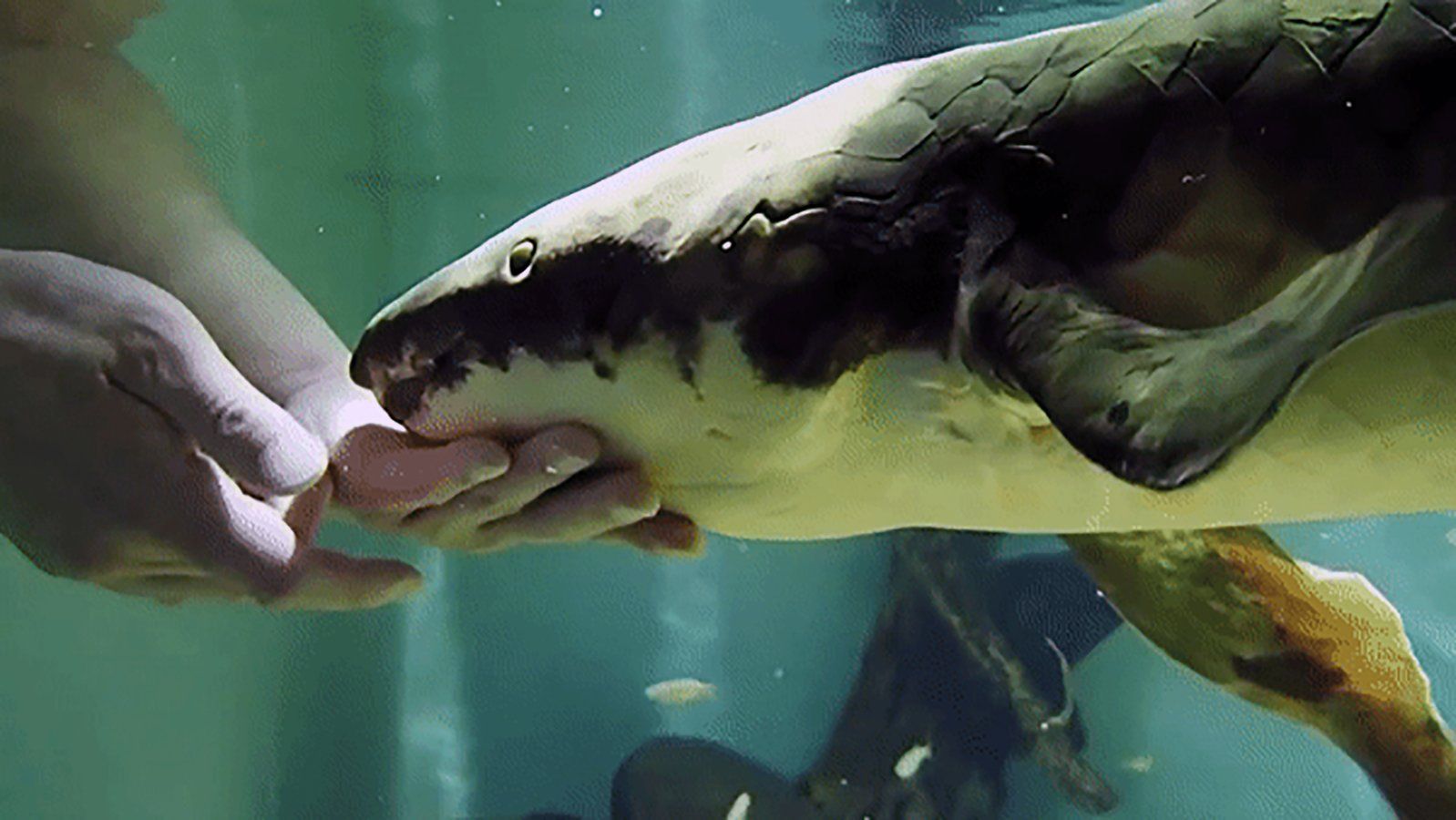World's Largest Quahog, world record in Westerly, Rhode Island
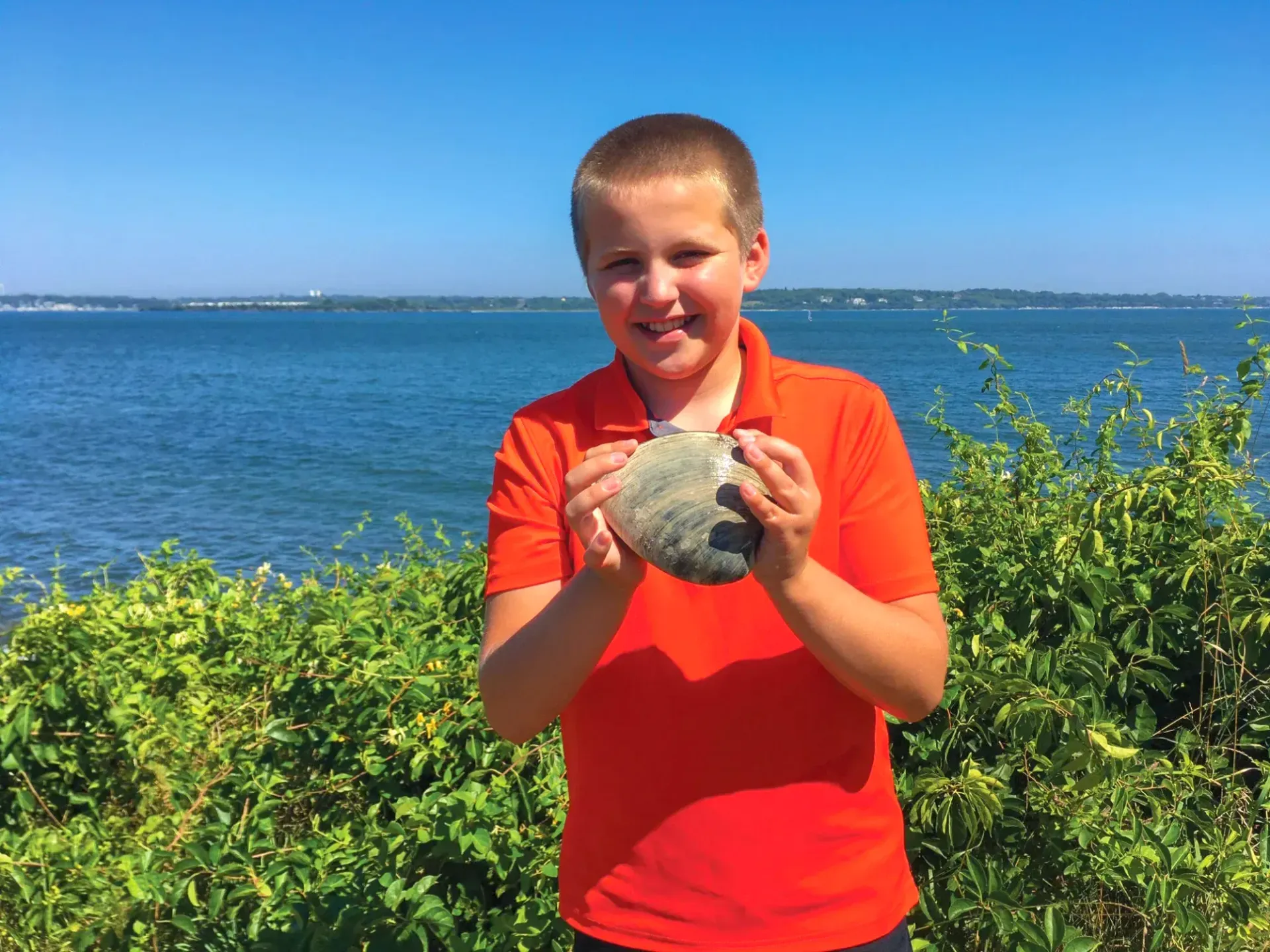
Westerly, Rhode Island, United States--Eleven-year-old
Cooper Monaco was clamming with his grandfather last summer in Weekapaug, Rhode Island, when he discovered a giant quahog (clam); the quahog–measuring 5.75 inches across and weighing 2 pounds, 7.75 ounces, sets the world record for being the
World's Largest Quahog, according to the WORLD RECORD ACADEMY.
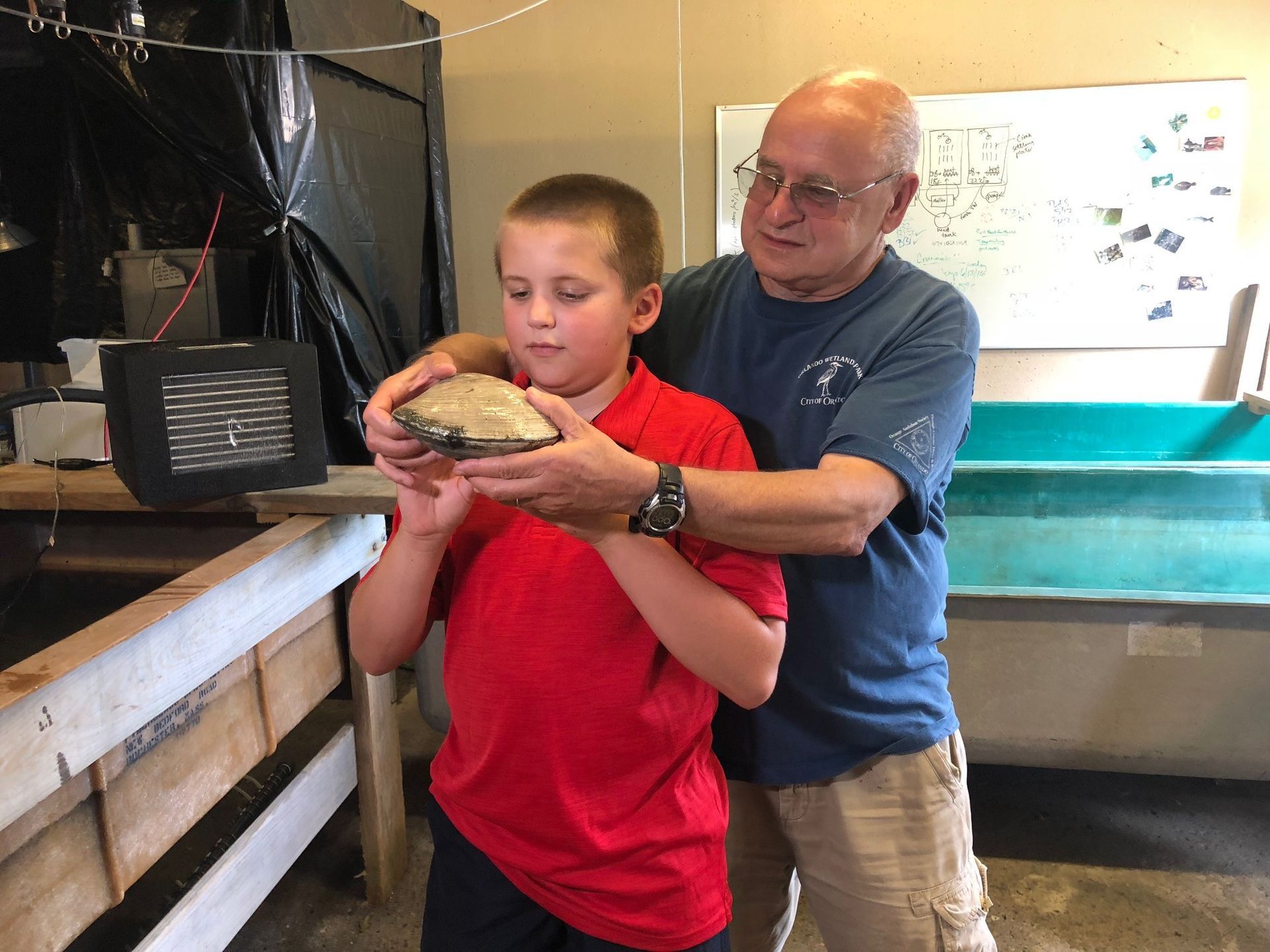
"An 11-year-old Rhode Island boy clamming with his grandfather found a giant quahog that is thought to be one of the largest ever harvested in state waters," The San Diego Union-Tribune says.
"Cooper Monaco, of Wakefield, found the massive mollusk Monday in the Weekapaug section of Westerly, and donated it to the University of Rhode Island’s Marine Science Research Facility in Narragansett, the university said in a statement Thursday.
"The clam is 5.75 inches (14.5 centimeters) across and weighs nearly 2 1/2 pounds (1.3 kilograms). The state Department of Environmental Management does not keep quahog records, but a typical quahog grows to about 4 inches (10 centimeters) across, the university said."
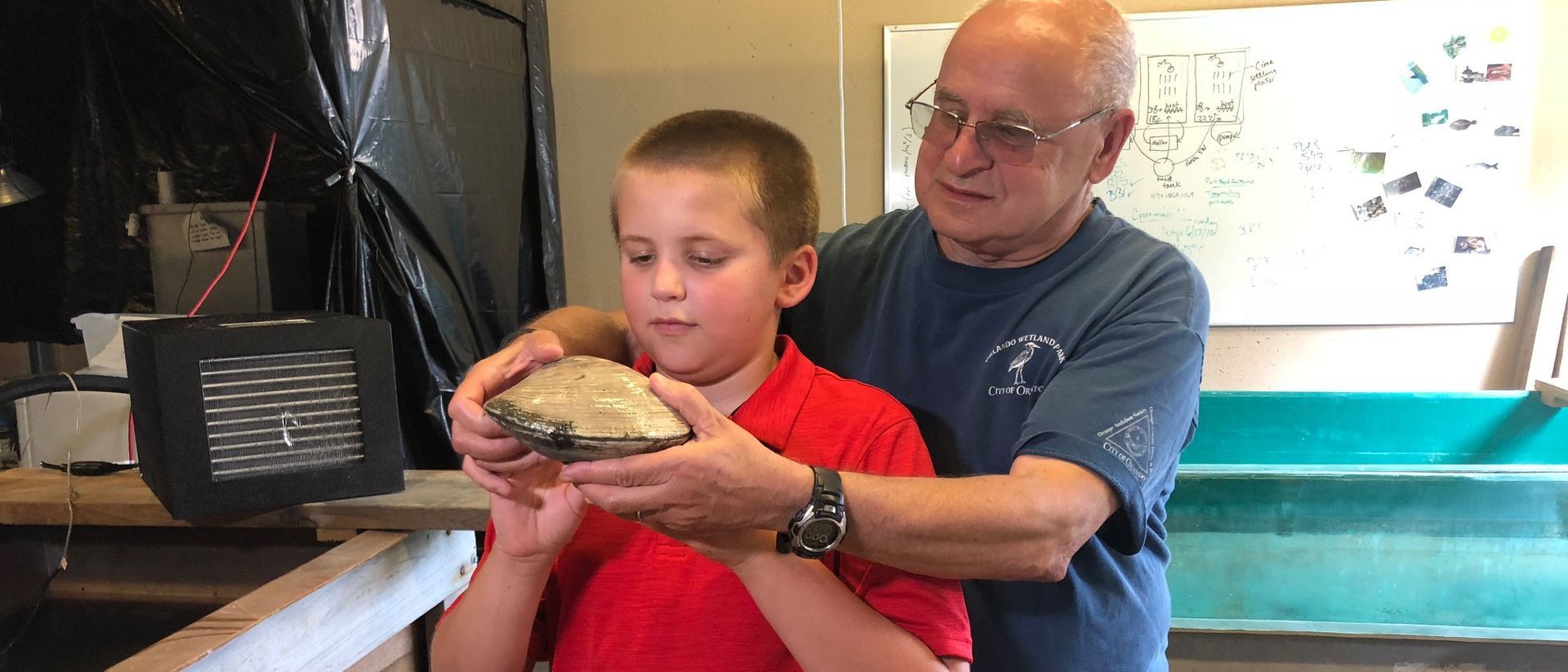
"Eleven-year-old Cooper Monaco was clamming with his grandfather last summer in Weekapaug, Rhode Island, when he discovered what may be the largest clam ever harvested from Rhode Island waters. Monaco and his family donated it to URI’s Marine Science Research Facility at the Narragansett Bay Campus," the University of Rhode Island says.
"The quahog–measuring 5.75 inches across and weighing 2 pounds, 7.75 ounces –is one of the largest specimens on record, though the Rhode Island Department of Environmental Management does not keep quahog records. A typical quahog grows to about 4 inches across.
"Cooper’s mother, Sherrie Monaco, says the family searched online and learned that the oldest ocean quahog, nicknamed Ming, was dredged from the waters off Iceland in 2006, and scientists calculated that it was 507 years old. The quahog found by Cooper is comparable in size to Ming, though its age has not yet been determined."
"“I’ve been reading the Guinness Book of World Records, so I told my mom not to cook it just in case it’s a record-breaker,” said Cooper," the
University of Rhode Island says.
"Ed Baker, manager of the URI Marine Science Research Facility, said the quahog would be displayed at the facility, along with blue lobsters and other Narragansett Bay sea creatures.
"“We try to inspire young kids to get interested in marine science by showcasing some of the marine life found in the bay,” he said. “We also highlight some of the interesting research conducted here and explain why it’s important.”
"The hard clam (Mercenaria mercenaria), also known as the round clam, hard-shell (or hard-shelled) clam, or the quahog, is an edible marine bivalve mollusk that is native to the eastern shores of North America and Central America from Prince Edward Island to the Yucatán Peninsula.
"It is one of many unrelated edible bivalves that in the United States are frequently referred to simply as clams. Older literature sources may use the systematic name Venus mercenaria; this species is in the family Veneridae, the venus clams.
"The most distinctive of these names is quahog. The word comes from the Narragansett word "poquauhock", which is similar in Wampanoag and some other Algonquian languages; it is first attested in North American English in 1794. Native polities on the eastern Atlantic seaboard made valuable beads called wampum from the shells, especially those colored purple; the species name mercenaria is related to the Latin word for commerce. Today people living in coastal New England still use Algonquian words for the clam, as they have done for thousands of years." (Wikipedia)
"Hard clams are quite common throughout New England, north into Canada, and all down the Eastern seaboard of the United States to Florida; but they are particularly abundant between Cape Cod and New Jersey, where seeding and harvesting them is an important commercial form of aquaculture. For example, the species is an important member of the suspension-feeding, benthic fauna of the lower Chesapeake Bay.
"Rhode Island is situated right in the middle of "quahog country" and has supplied a quarter of the U.S.'s total annual commercial quahog catch. The quahog is the official shellfish of the U.S. state of Rhode Island.
"The species has also been introduced and is farmed on the Pacific coast of North America and in Great Britain and continental Europe. It reproduces sexually by females and males shedding gametes into the water." (Wikipedia)
"An 11-year-old boy from Wakefield found a massive quahog while clamming with his family in Westerly. A few days Cooper Monaco was in Weekapaug digging for dinner with his grandfather, mom, and siblings. He said he was on a dry spell while everyone else had been finding them left and right," the WJAR says.
""I had been on a spree of like not finding anything for like six or seven minutes," said Monaco. "I was on my hands and knees digging because that's what I like to do and I flipped this big thing and said this is either a big rock or a humongous clam."
"Cooper couldn't believe his eyes. He was as happy as a clam, while holding the one he'd found."
"A Wakefield boy out digging clams with his grandfather made the discovery of a lifetime– a massive quahog weighing nearly two and a half pounds and measuring almost 6 inches across," the
abc6.com says.
"Cooper Monaco, 11, was somewhere in Weekapaug, Westerly (he’s keeping the exact location a secret for now) with his grandfather on their weekly clamming excursion, when he pulled out the whopper.
“I was down on my hands and knees in the water looking for clams, and I touched this huge rock thing,” Monaco said. “I always pull out rocks and throw them to the side and look under them. And then I felt the edge of it and I thought, ‘Holy moly, this is a clam.’ So I pulled it out. It was amazing.”
"An 11-year-old boy in the American state of Rhode Island recently discovered an unusual example of sea life. He found what is thought to be one of the largest quahogs ever found in the state. Quahogs are a kind of large clam that is eaten as food," the
Voice of America says.
"Cooper Monaco was looking for clams with his grandfather when he found the large creature. Monaco gave it to the University of Rhode Island’s Marine Science Research Facility in Narragansett, the university said in a recent statement.
"The clam is 14.5 centimeters across and weighs nearly 1.3 kilograms. The Department of Environmental Management for the state does not keep quahog records. But a usual quahog grows to about 10 centimeters across, the university said."
Photos: World's Largest Quahog, world record in Westerly, Rhode Island
(1) Cooper Monaco holds a giant quahog that weighs nearly 1 kilogram. It was donated to the University of Rhode Island's Marine Science Research Facility. (Todd McLeish/University of Rhode Island)
(2-3) Cooper Monaco, 11, and his grandfather pose with the massive quahog. (WJAR)
Related world records:
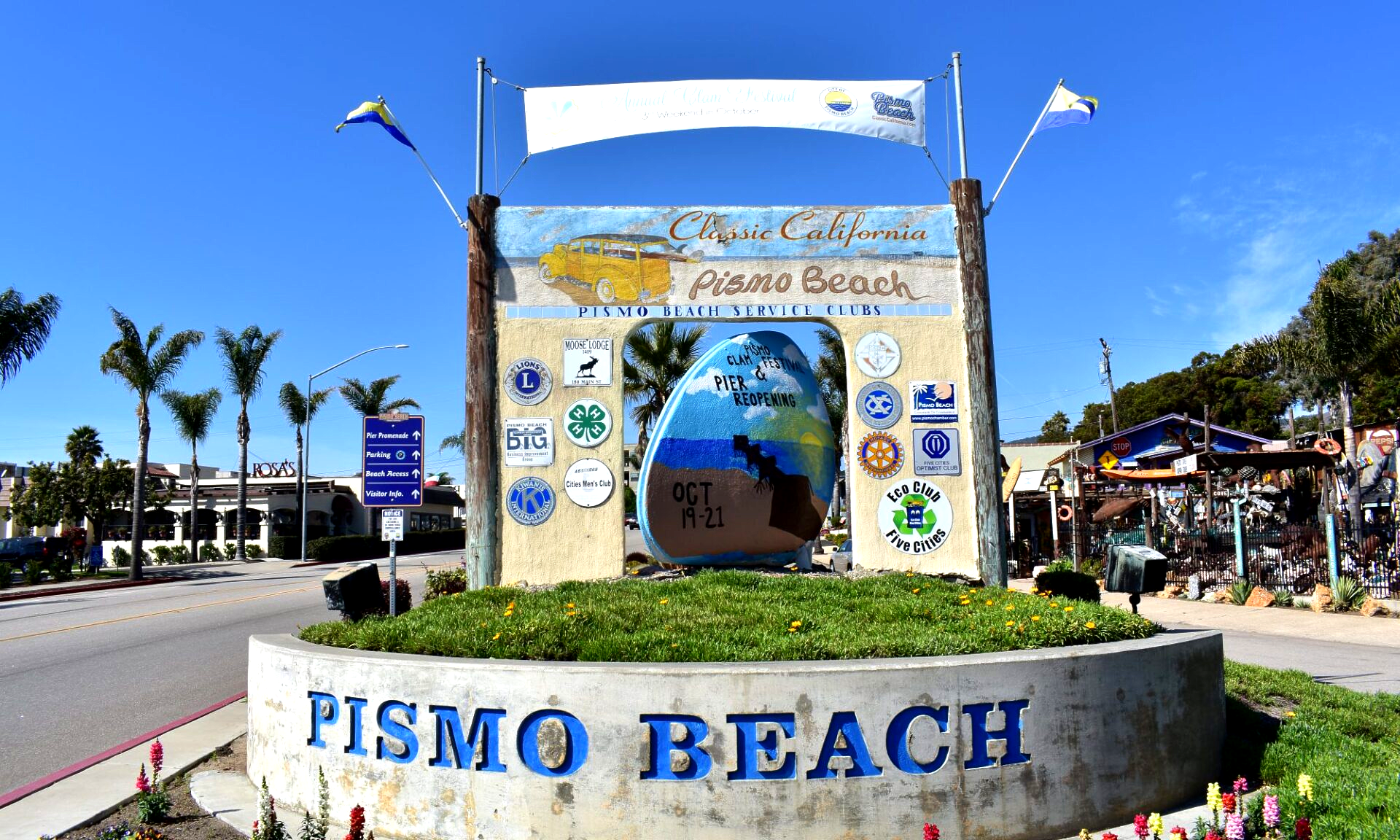
|
Alabama world records |
Alaska world records |
Arizona world records |
Arkansas world records |
California world records |
|
Colorado world records |
Connecticut world records |
Delaware world records |
Florida world records|
|Georgia world records | Hawaii world records| Idaho world records| Illinois world records| Indiana world records|
|Iowa world records | Kansas world records| Kentucky world records| Louisiana world records| Maine world records|
| Maryland world records| Massachusetts world records | Michigan world records | Minnesota world records |
| Mississippi world records | Missouri world records | Montana world records | Nebraska world records |
| Nevada world records | New Hampshire world records | New Jersey world records | New Mexico world records |
| New York world records | North Carolina world records | North Dakota world records | Ohio world records |
| Oklahoma world records | Oregon world records | Pennsylvania world records | Rhode Island world records |
| South Carolina world records | South Dakota world records | Tennessee world records | Texas world records |
| Utah world records | Vermont world records | Virginia world records | Washington world records |
| West Virginia world records | Wisconsin world records | Wyoming world records|
| Agriculture world records| Amazing careers world records | Arts world records |
| AMUSEMENT & THEME PARK WORLD RECORDS |
| Biggest world records | Business world records | Books world records | |
| Christmas world records | Collections world records | CATS world records | DOGS world records |
|Drinks world records | | Easter world records | Entertainment world records | FASHION world records |
|
Farming world records |
Fishing world records |
Food world records |
|
Games world records |
Green world records |
Halloween world records |
Hobbies world records|KIDS world records |
| Human Body world records | Internet world records | INVICTUS world records | JUSTICE world records |
| Mass Participation world record | Medical world records |
| Military world records | MEDICAL world records | MUSEUM world records | Modern Society world records |
|
Most Successful world records | Nature world records | New Year world records |
PET world records |
|
Religious world records | Science world records |
Skydiving world records
| Smallest world records | Sport world records | Stunts world records | Strength world records |
| Technology world records | Thanksgiving world records | Travel world records | Transport world records |
| Valentine's Day world records | Youngest world records |
| Weather world records | Wedding world records | WORLD'S FIRST world records |

